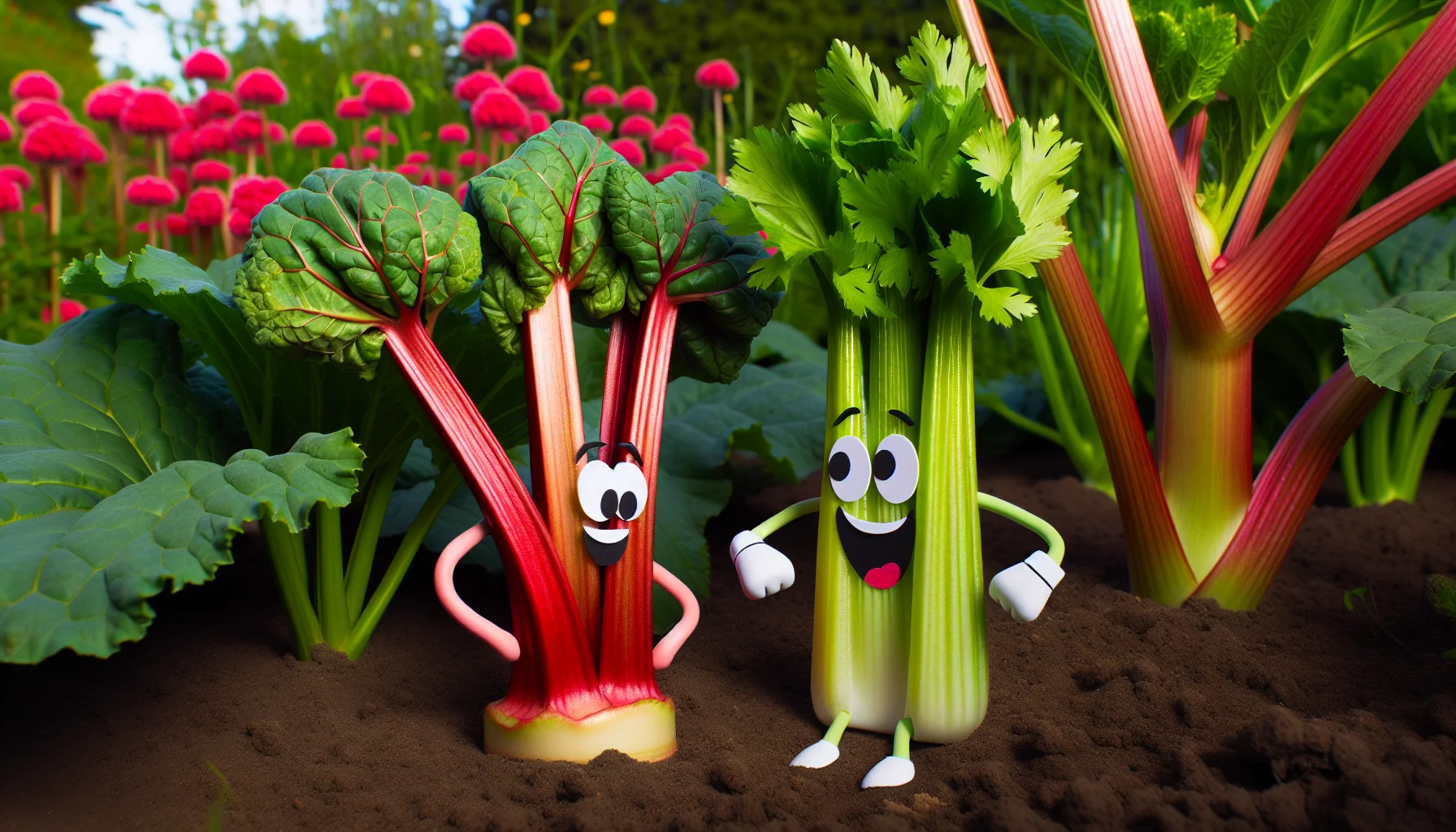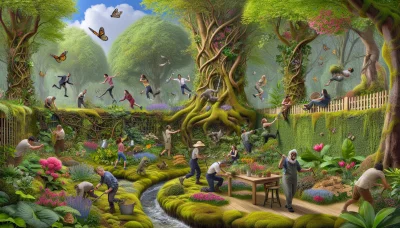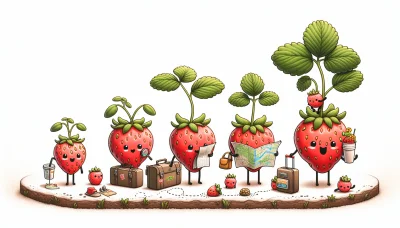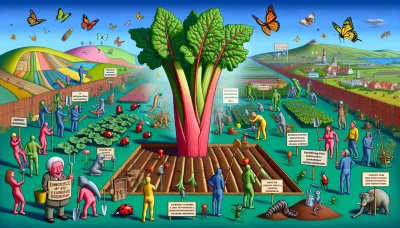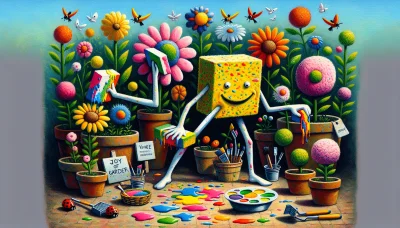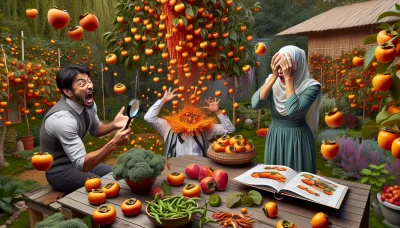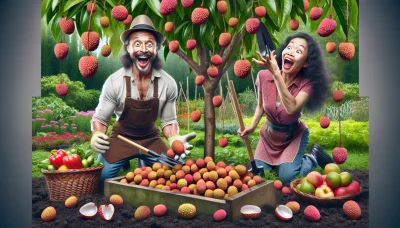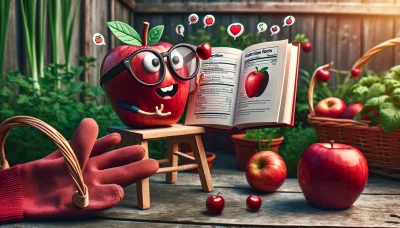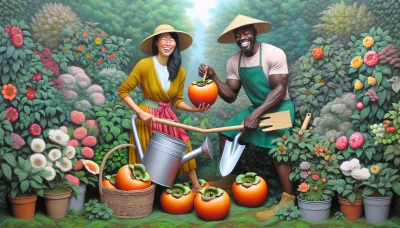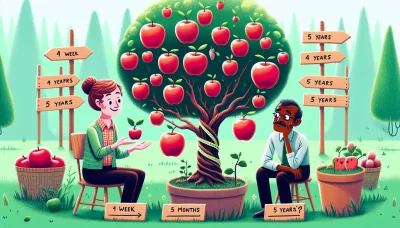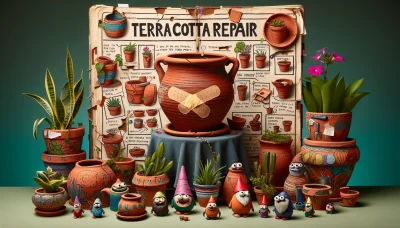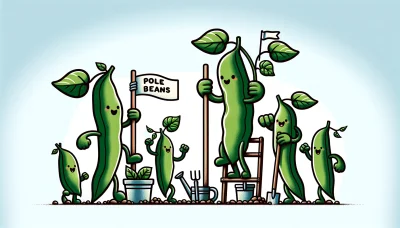Is rhubarb related to celery Quiz
Test Your Knowledge
Question of
Is Rhubarb Related to Celery?
Many people find themselves pondering whether rhubarb and celery share a botanical kinship, largely due to their visually similar stalks. This confusion is understandable, as both plants boast long, fibrous stalks that could lead one to assume a familial connection. However, the similarities largely end there, with each plant belonging to different families and serving distinct roles in both the culinary and gardening worlds. This introduces us to the broader and endlessly fascinating theme of gardening, a realm where such botanical mysteries and marvels are regularly unraveled, offering endless learning opportunities and surprises for enthusiasts.
Understanding Rhubarb and Celery
Rhubarb and celery are two plants that are often found in kitchens around the world, yet they serve very different purposes in cooking. Despite their distinct uses, they share some botanical characteristics that classify them both within the broad family of vegetables. This text aims to shed light on both their similarities and differences from a botanical perspective.
Rhubarb is known botanically as Rheum rhabarbarum, belonging to the Polygonaceae family. It is often considered a vegetable, but in the culinary world, it's used more like a fruit in pies and desserts. Rhubarb is characterized by its large leaves and thick, red stalks, which are the only edible parts of the plant. The leaves of rhubarb contain oxalic acid and are toxic if consumed.
On the other hand, celery, or Apium graveolens, is a member of the Apiaceae family. Unlike rhubarb, celery is utilized for its crisp stalks, leaves, and seeds, all of which are edible. Celery is primarily used in salads, soups, and as a flavoring for various dishes. It's known for its high water content and fibrous stalks, providing a crunchy texture and a mild, refreshing taste.
Both rhubarb and celery thrive in cool climates and require well-drained, fertile soil to grow. They share a similarity in that both plants have stalks that are utilized in cooking, though the parts of the plants used and their culinary applications differ significantly. While rhubarb stalks are thick and used primarily in sweets, celery stalks are slender, fibrous, and used in savory dishes.
One of the most significant differences between the two is their taste profile. Rhubarb is known for its tartness, which is why it is often cooked with sugar and used in desserts. Celery, however, has a mild, somewhat peppery flavor, making it a versatile ingredient in savory recipes. Despite these differences, both plants are valued for their unique flavors and textures in the culinary world.
In conclusion, while rhubarb and celery may share some botanical characteristics and growing requirements, their uses in the kitchen are quite distinct. Understanding these differences and similarities can enhance our appreciation for these versatile plants and inspire innovative uses in cooking.
The Botanical Family of Rhubarb and Celery
Rhubarb and celery, while seemingly different in taste and use, share a botanical relationship. Here's how they are categorized:
- Rhubarb is part of the Polygonaceae family, commonly known as the buckwheat or smartweed family.
- Celery belongs to the Apiaceae family, which is also known as the carrot or parsley family.
Despite their differences in appearance and culinary use, rhubarb and celery do not share the same botanical family. Each belongs to a distinct family with its unique characteristics and members.
Cultivating Rhubarb and Celery in Your Garden
Growing rhubarb and celery in your garden can be a rewarding endeavor, providing you with fresh, flavorful produce right from your backyard. Both plants have specific growing requirements that, when met, lead to healthy, productive crops.
Rhubarb
Rhubarb thrives in cooler climates and is best planted in early spring. It prefers well-drained, fertile soil with a pH between 6.0 and 6.8. Incorporating plenty of organic matter into the soil before planting will help ensure a healthy rhubarb plant.
When it comes to sunlight, rhubarb requires full sun to partial shade. Ensure it gets at least 6 hours of sunlight each day for optimal growth. Watering is crucial, especially during dry spells. Rhubarb needs a consistent moisture level, so aim to keep the soil evenly moist but not waterlogged.
Celery
Celery, on the other hand, demands more attention to grow successfully. It requires rich, well-draining soil with a pH between 6.0 and 7.0. Like rhubarb, incorporating organic matter into the soil will benefit celery growth.
This plant needs a lot of moisture and prefers cooler temperatures, making it ideal for spring and fall gardening in most regions. Celery should be watered regularly to maintain consistently moist soil. Avoid over-watering, which can lead to issues like root rot.
Regarding sunlight, celery enjoys full sun but can tolerate partial shade, especially in hotter climates. Providing celery with 5-6 hours of sunlight per day is typically sufficient for healthy growth.
By understanding and catering to the specific needs of rhubarb and celery, you can enjoy a bountiful harvest from your garden. Remember, patience and care are key to cultivating these plants successfully.
Health Benefits and Uses
Rhubarb is a unique vegetable often cooked as if it were a fruit, especially in sweet dishes like pies and jams. Its nutritional profile is impressive, offering a good source of vitamins C and K, which are essential for immune function and bone health, respectively. Rhubarb also contains dietary fiber, which aids in digestion and contributes to a healthy gut. Furthermore, its antioxidant properties can help neutralize free radicals, reducing inflammation and protecting against various diseases.
Culinary uses of rhubarb extend beyond the traditional rhubarb pie. It can be used in a variety of dishes, both sweet and savory. Rhubarb compote or jam can serve as a delightful topping for yogurts, oatmeal, or toast. In savory dishes, rhubarb's tartness pairs well with fatty meats and poultry, acting as a natural tenderizer and flavor enhancer. When cooking with rhubarb, it's important to remember that only the stalks are edible; the leaves are toxic and should be discarded.
Celery, on the other hand, is a staple in many kitchens due to its versatility and health benefits. It is low in calories but high in essential nutrients, including vitamins A, K, and C, as well as potassium and folate. These nutrients support cardiovascular health, immune function, and can even have anti-inflammatory effects. Celery's high water content and fiber also make it ideal for digestive health and maintaining hydration.
From a culinary perspective, celery is celebrated for its crisp texture and subtle, earthy flavor, making it a popular addition to salads, soups, and stews. It's a key component of the classic mirepoix—a mixture of onions, carrots, and celery used as a flavor base in many dishes. Celery can also be enjoyed raw as a healthy snack, often accompanied by peanut butter or hummus to add protein and fat for a more satisfying treat.
Both rhubarb and celery contribute unique flavors and nutritional benefits to the diet, making them valuable components of a healthy and balanced eating plan. Whether used in traditional recipes or innovative culinary creations, these vegetables can enhance the taste and nutritional value of your meals.
Common Pests and Diseases
Rhubarb
- Crown Rot: This is caused by soil-borne fungi. Prevention includes ensuring good drainage and avoiding over-watering. For treatment, remove and destroy affected plants.
- Rhubarb Curculio: A large snout beetle that punctures stalks and lays eggs. Keep the area weed-free and destroy infested stalks to control their spread.
Celery
- Pink Rot: This fungus affects the stalks, turning them a pinkish color. Ensure proper spacing for air circulation and apply fungicides if necessary.
- Celery Leaf Tier: Caterpillars that roll and tie the leaves to feed within. Remove affected leaves and use appropriate insecticides as needed.
- Septoria Leaf Spot: Causes small, brown spots on leaves. Avoid overhead watering and remove infected foliage. Fungicide applications can also help.
Conclusion: Embracing Diversity in the Garden
Understanding the differences and similarities between rhubarb and celery is crucial for gardeners aiming to diversify their garden crops. While both plants may share some visual similarities, their cultivation needs, nutritional profiles, and culinary uses vary significantly. Recognizing these distinctions not only enriches the gardener's knowledge but also enhances the garden's biodiversity. Embracing such diversity allows for a more resilient and productive garden ecosystem, offering a wider array of flavors and benefits to enjoy.
